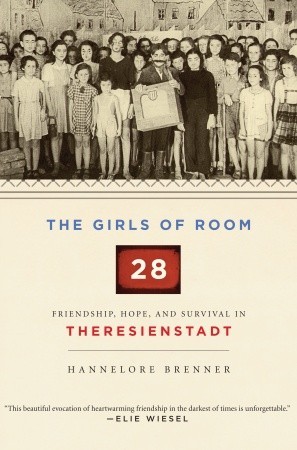
The Girls of Room 28 – Friendship, Hope, and Survival in Theresienstadt
Sunday to Thursday: 09:00-17:00
Fridays and Holiday eves: 09:00-14:00
Yad Vashem is closed on Saturdays and all Jewish Holidays.
Entrance to the Holocaust History Museum is not permitted for children under the age of 10. Babies in strollers or carriers will not be permitted to enter.

The Girls of Room 28 – Friendship, Hope, and Survival in Theresienstadt
The Girls of Room 28: Friendship, Hope, and Survival in Theresienstadt
Hannelore Brenner
Shocken Books, 2009
322 pages
Translated from the original German into English, this book relates the story of several of the over one hundred children who were incarcerated in Girl’s Home L410, Room 28 in the Theresienstadt Ghetto.
The “girls” who survived and found each other after many years, meet regularly in Spindlemuhle, Czech Republic, and Brenner joined them several times, in order to interview ten of the fifteen girls who survived this terrible experience. This has enabled her to relate their experiences – reproducing their poems, drawings, music, and diaries – and, more importantly, memorialize those of their friends who did not survive.
Deep relationships developed between the girls, which helped them to survive, as they became like family to each other. They depended on each other and loved each other like sisters. Daily life in the camp is vividly described through many of the surviving diary entries written by the girls. One important aspect of their life was the continuation of their education, under the guidance of scientists, artists, and musicians who taught their pupils secretly.
Some of the children were auditioned and accepted to perform in Brundibar, the children’s opera, under the capable baton of composer Hans Krasa and other outstanding personalities (such as set designer and artistic director Frantisek Zalenka). These were the lighter moments in what was otherwise a life of uncertainty. Ela Stein writes in her diary: “
When my turn came, I shook with fright at the thought that I wouldn’t sing well enough. But then Rudi Freundenfeld said to me, “You know what? You’ll play a cat.” A cat in a children’s opera? That was something extraordinary.”
This is a very comprehensive book for any teacher or student wishing to learn about daily life in Theresienstadt. It is a lesson of humanity under the most horrendous of conditions, the will to live and the altruism of others in trying to make the conditions more humane for the young children who found themselves in this awful camp.
The book is written in chronological order and dates from 1942-44, the years these women were in Theresienstadt. Historical facts relating the Second World War are interwoven throughout the book, and at its end are short biographies of the “girl” survivors, now in their seventies, who not only survived but were able to build careers and families in the aftermath of the Holocaust.

Thank you for registering to receive information from Yad Vashem.
You will receive periodic updates regarding recent events, publications and new initiatives.

"The work of Yad Vashem is critical and necessary to remind the world of the consequences of hate"
Paul Daly
#GivingTuesday
Donate to Educate Against Hate


Worldwide antisemitism is on the rise.
At Yad Vashem, we strive to make the world a better place by combating antisemitism through teacher training, international lectures and workshops and online courses.
We need you to partner with us in this vital mission to #EducateAgainstHate
The good news:
The Yad Vashem website had recently undergone a major upgrade!
The less good news:
The page you are looking for has apparently been moved.
We are therefore redirecting you to what we hope will be a useful landing page.
For any questions/clarifications/problems, please contact: webmaster@yadvashem.org.il
Press the X button to continue



